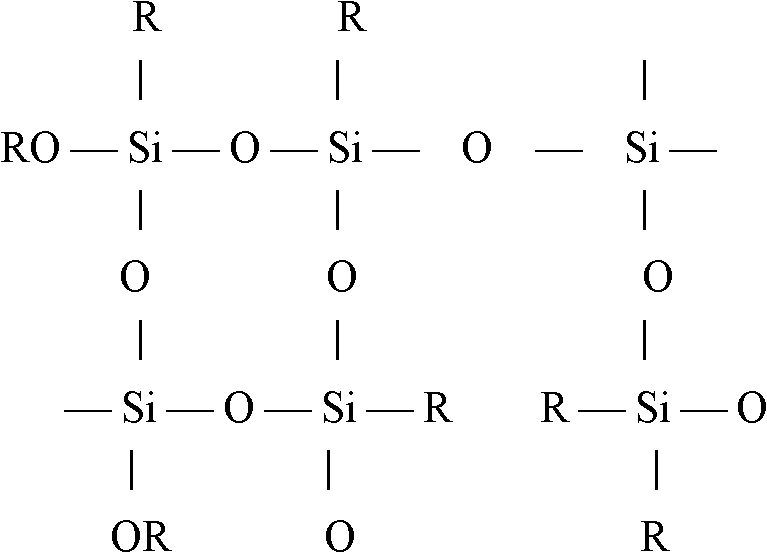Preparation method of modified hydroxyl polyester resin
A hydroxyl polyester resin and modification technology, which is applied in the field of preparation of hydroxyl polyester resin, can solve the problems of coating loss, pulverization, adhesion drop, etc., and achieve the effect of expanding the application field
- Summary
- Abstract
- Description
- Claims
- Application Information
AI Technical Summary
Problems solved by technology
Method used
Image
Examples
Embodiment 1
[0034] a) Reaction process: In the synthesis kettle, raise the temperature of the kettle to 90-100°C, and put in 5.7kg of neopentyl glycol, 8.0kg of purified terephthalic acid, 0.15kg of trimethylolpropane, and 4.2kg of silicone resin in sequence , Monobutyl tin oxide 20g. After feeding the materials, seal the kettle and heat it up, and at the same time fill it with nitrogen for production protection. When the temperature rises to 245°C, maintain the reaction temperature for 2 hours. When the top temperature of the reaction kettle drops below 70°C, take samples for analysis. The acid value is 9-12mgKOH / g;
[0035] b) Curing process: lower the temperature of the kettle to 230°C, carry out vacuum operation, the vacuum degree of the reactor is less than -0.090MPa, react for 2 hours, control the acid value <5mgKOH / g, the viscosity is 0.3-0.5Pa.s, and lower the temperature of the kettle to Add 40g of dibutyltin dilaurate at 200-210°C, keep it for 30 minutes, and then stop the rea...
Embodiment 2
[0038] a) Reaction process: In the synthesis kettle, the temperature of the kettle was raised to 90-100° C., and 4.6 kg of neopentyl glycol, 0.10 kg of trimethylolpropane, and 4 kg of silicone resin were successively put in. After feeding the materials, seal the kettle and heat it up, and at the same time, fill it with nitrogen for production protection. When the temperature rises to 240°C, maintain the reaction temperature for 2 hours. When the top temperature of the reaction kettle drops below 70°C, take a sample for analysis. The sample is viscous and transparent;
[0039] Lower the temperature of the kettle to 225°C, put in 6.0kg of isophthalic acid and 14g of monobutyltin oxide, raise the temperature to 240°C, maintain the temperature for 3 hours, and take samples for analysis after the top temperature of the reaction kettle drops below 70°C. 8-10mgKOH / g;
[0040] b) Curing process: lower the temperature of the kettle to 220°C, carry out vacuum operation, the vacuum degre...
Embodiment 3
[0043] 5.0kg of neopentyl glycol, 5.0kg of silicone resin, and 6.3kg of isophthalic acid were added in the reaction step except a).
[0044]b) The curing process is: lower the temperature of the kettle to 215°C, carry out vacuum operation, the vacuum degree of the reactor is less than -0.090MPa, react for 1 hour, control the acid value <5mgKOH / g, the viscosity is 0.4-0.6Pa.s, and lower the temperature of the kettle Add 40g of dibutyltin dilaurate to 200-210°C, and keep it for 30 minutes before ending the reaction and discharging, the other procedures are the same as in Example 2.
PUM
 Login to View More
Login to View More Abstract
Description
Claims
Application Information
 Login to View More
Login to View More - R&D
- Intellectual Property
- Life Sciences
- Materials
- Tech Scout
- Unparalleled Data Quality
- Higher Quality Content
- 60% Fewer Hallucinations
Browse by: Latest US Patents, China's latest patents, Technical Efficacy Thesaurus, Application Domain, Technology Topic, Popular Technical Reports.
© 2025 PatSnap. All rights reserved.Legal|Privacy policy|Modern Slavery Act Transparency Statement|Sitemap|About US| Contact US: help@patsnap.com



